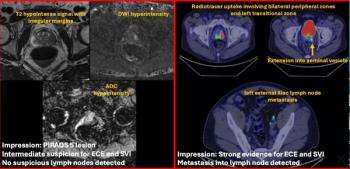
Podcast: Improving Natural Language Processing Error Rates
C. Matthew Hawkins, MD, discusses challenges of natural language processing and how more standardization can reduce error rates of speech recognition software.
[[{"type":"media","view_mode":"media_crop","fid":"11967","attributes":{"alt":"","class":"media-image media-image-right","id":"media_crop_7562901937715","media_crop_h":"0","media_crop_image_style":"-1","media_crop_instance":"207","media_crop_rotate":"0","media_crop_scale_h":"0","media_crop_scale_w":"0","media_crop_w":"0","media_crop_x":"0","media_crop_y":"0","style":"margin: 5px; float: right; border-width: 0px; border-style: solid;","title":" ","typeof":"foaf:Image"}}]]As many as 22 percent of radiology reports contain errors associated with natural language processing, said C. Matthew Hawkins, MD, a pediatric radiology fellow at Cincinnati Children’s Hospital Medical Center. Hawkins is speaking on the topic at the
In this podcast, Hawkins discusses how these errors can change the meaning of radiology reports and how augmenting standardized content associated with various types of speech recognition software can decrease mistakes.
Newsletter
Stay at the forefront of radiology with the Diagnostic Imaging newsletter, delivering the latest news, clinical insights, and imaging advancements for today’s radiologists.




























